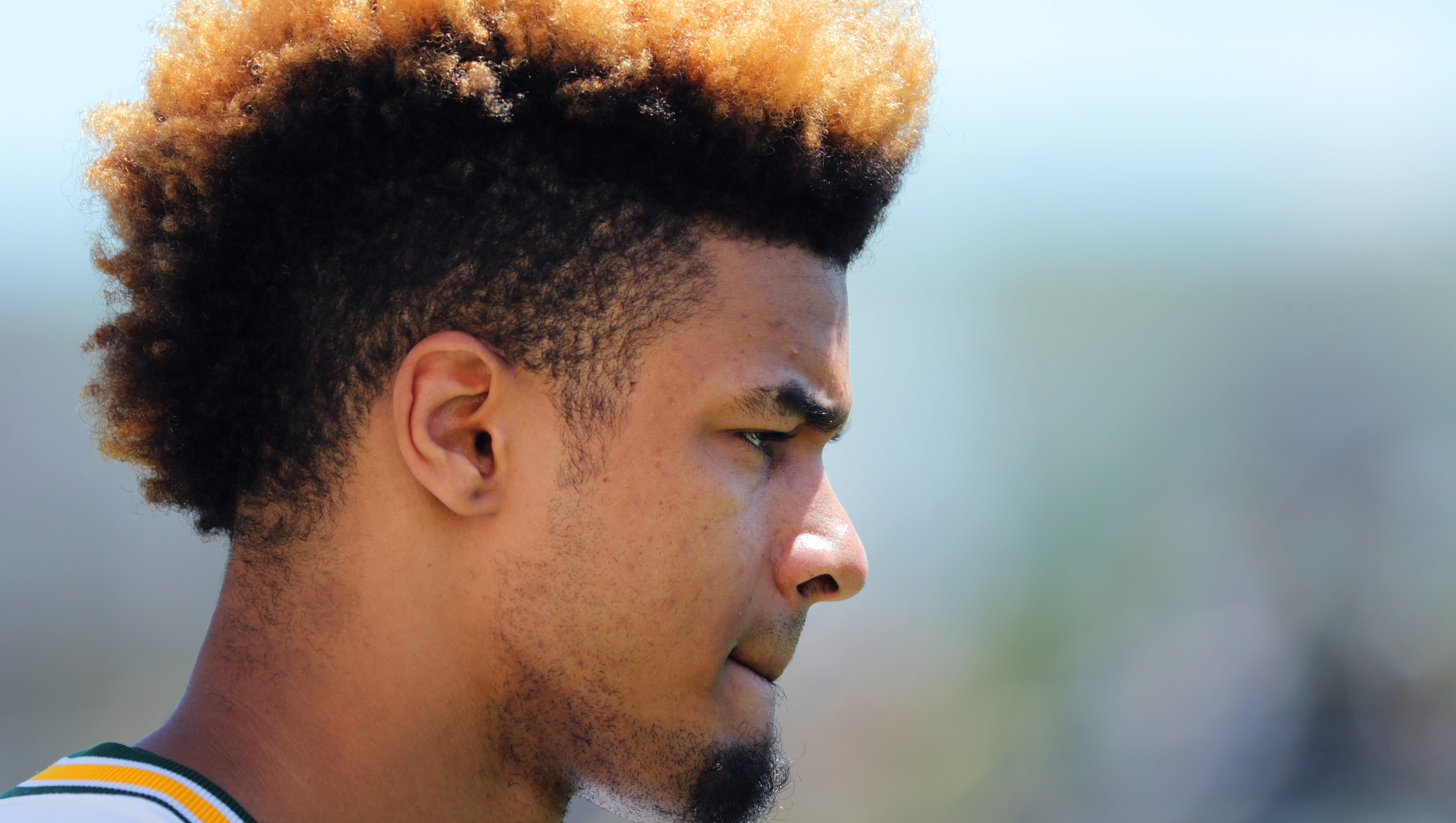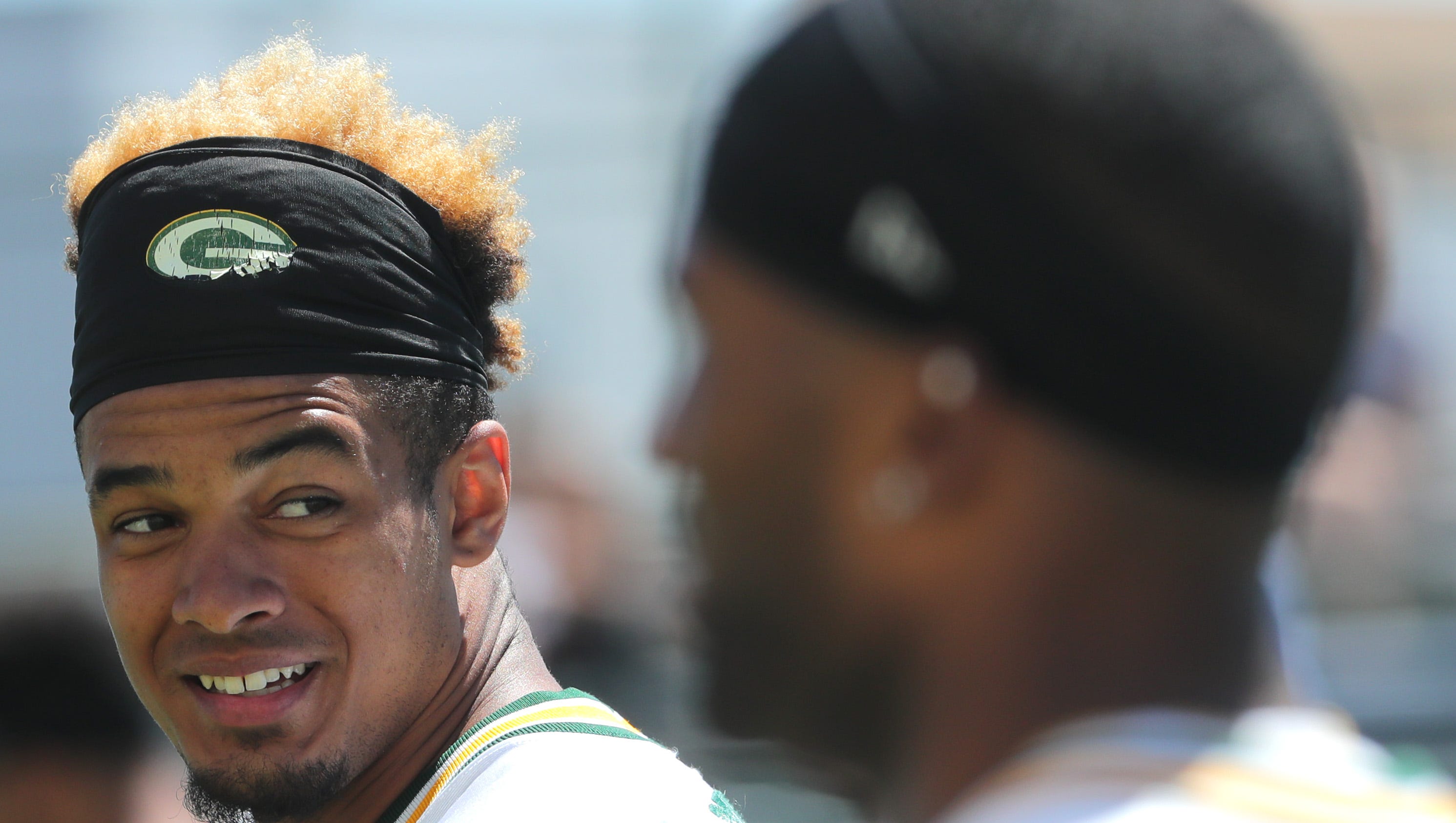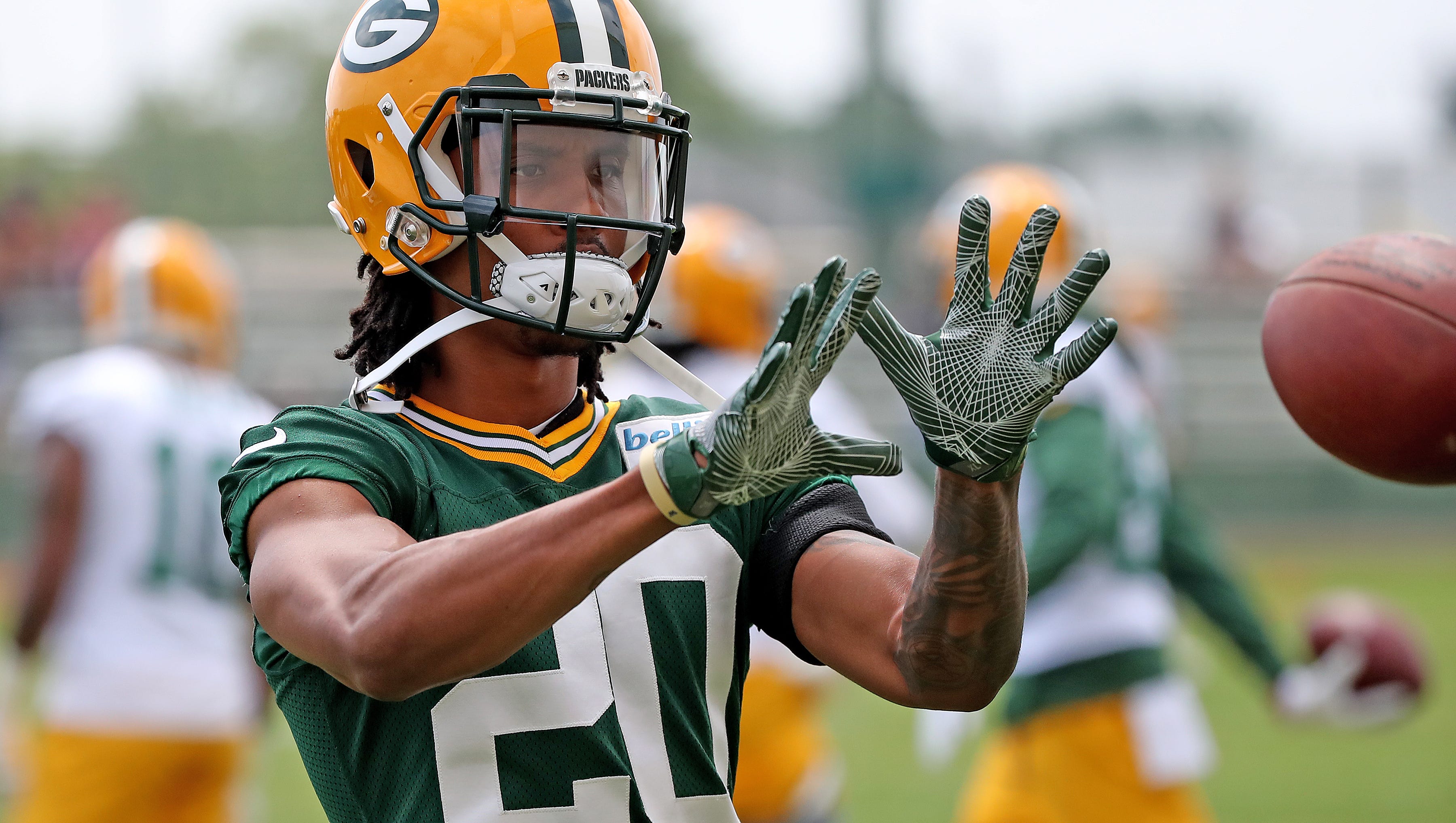Silverstein: Packers need rookie wide receivers to grow up quickly


GREEN BAY – Anyone who watched the wide receivers on the first day of Green Bay Packers minicamp would have been hard-pressed to miss the neatly run routes, the vise-like hands and towering length of sixth-round pick Equanimeous St. Brown.
It’s hard not to notice a 6-foot-5 guy with 9¾-inch hands who runs the 40-yard dash in 4.48 seconds, period. But when that guy reaches out and corrals a pass that teammate Jaire Alexander, the team’s No. 1 pick, thought he had tipped away in the corner of the end zone during a 2-minute drill, it’s mighty impressive.
St. Brown had the best day of the three receivers the Packers drafted in the fourth, fifth and sixth rounds this year. He ran his routes decisively, didn’t drop any passes and showed he wasn’t afraid to go over the middle.
You would expect the coaches to be ecstatic to see one of their rookies perform that way until you consider that every veteran with six or more years — including cornerbacks Tramon Williams and Davon House — was excused from practice, the players were practicing in shorts, helmets and jerseys only and contact was minimal.
Over the years, there have been countless offseason MVPs who found themselves buried on the depth chart a week into training camp.
RELATED:Gutekunst sees value in late free-agent signings
DOUGHERTY:Packers hoping to hit it big with tall, fast WRs
RELATED:Competition shaping up for Packers' return jobs
“It’s one thing to beat a guy right away and get wide open and catch the ball, but can they catch in traffic, can they catch with a guy hanging on them, can they extend and reach out and really pluck the ball and finish plays?” offensive coordinator Joe Philbin said. “That’s something that’s a little hard to gauge at this point.”
Not since Greg Jennings was drafted in 2006 has a Packers rookie receiver transitioned to the pro game quickly enough to be able to play all three receiver positions (flanker, split end and slot) and then put up two 100-yard receiving games in the first five weeks of the regular season.
Others like Davante Adams and James Jones had reasonably good starts, but production from all of the three tailed off at the end of the year. Jennings (45 receptions for 632 yards and three touchdowns) and Jones (47 receptions for 676 yards and two touchdowns) had the best rookie seasons of all the Packers’ top receivers selected during the Mike McCarthy era.

“Football has evolved even since then,” Philbin said, referring to changes such as more no-huddle offense. “It’s a little more multiple. There’s a little more to it. I think we are a little more multiple formationally than we were then probably. We probably move around more pre-snap maybe than we did back then.”
One big difference between those three and this year’s three draft picks — J’Mon Moore, Marquez Valdes-Scantling and St. Brown — is that Jennings and Adams, as well as Randall Cobb and Jordy Nelson, were second-round picks. Jones was a third-round pick.
Moore was taken in the fourth round, Valdes-Scantling in the fifth and St. Brown in the sixth for a reason. No one saw them having the careers Jennings, Jones, Nelson and Adams have had. Of course, if draft position were the only predictor of success in the NFL, Pittsburgh never would have been able to land Antonio Brown, arguably the top receiver in the league, with a sixth-round pick.
For the most part, offseason workouts are like post-graduate work for rookies. It’s where they study to become professionals in a specialized field. It’s a chance for them to prepare for training camp and show off their physical talents, and not much more.
“If you’re a receiver and you don’t look good running routes in shorts, I don’t know,” Philbin said. “That’s not a great sign.”
So far, Philbin and the other offensive coaches have felt good about what they’ve seen from all three rookie receivers. They have never had a trio with such a combination of length and speed, and so every time one of the three performs well, they can’t help but wonder what that kind of athlete can do for their offense.
Moore, at 6-2½, 207 pounds, is the strongest of the three; Valdes-Scantling, at 6-4, 206 pounds, is the fastest (4.37-second 40-yard dash) and has the biggest hands (10¼ inches); and St. Brown is the tallest and has the longest arms (33 inches). All three have different skill sets and all three have different learning curves.
“It’s exciting to watch them,” said Jim Hostler, offensive pass game coordinator. “They’re big men, with length, they can run, which is all the starting point you’d like to have, which is really good.
“They’re bright guys. Hopefully, they’ll be bright enough to overcome that learning curve, which they’re working through. Their suddenness, their speed, there’s body control even though they are big men. So that’s exciting. Those kinds of guys are easy to throw the ball to.”
All three of the receivers said they were approaching the offseason program like it was summer school, using every trick they can to memorize their playbooks after each installation. St. Brown and Valdes-Scantling both said that once they get that week’s section of the playbook on their tablets, they draw every single route on paper.

St. Brown said he has a photographic memory and so once he puts pen to paper, the play is in his head and he feels confident he’ll remember it. But there are still adjustments, reads and timing with the quarterback that he must master on the field.
It might seem easy enough now, but when the other team is scheming against the offense and disguising coverages and the cornerbacks are pressing at the line of scrimmage, the degree of difficulty will increase. It’s not that far a distance from offseason valedictorian to training camp dropout, especially when the pressure of winning a roster spot begins to increase.
“We have a lot of great players,” Valdes-Scantling said. “They’re going to keep the best players and it’s about being one of those players, it’s not about being the best athlete. It’s how you do things when you get on the field.”
The rookies don’t need too much of a history lesson to know that rookie receivers taken beyond the first round typically don’t blast out of the gate. But after Adams and Cobb — and ostensibly tight end Jimmy Graham, who is more like a receiver — there aren’t any receiver positions locked down.
General manager Brian Gutekunst didn’t draft the three tall receivers as an experiment. He is expecting them to compete for jobs and help elevate the receiver position this year. Expectations aren’t through the roof, but when the pads come on, they’ll be counted on to be more than just offseason wonders.
